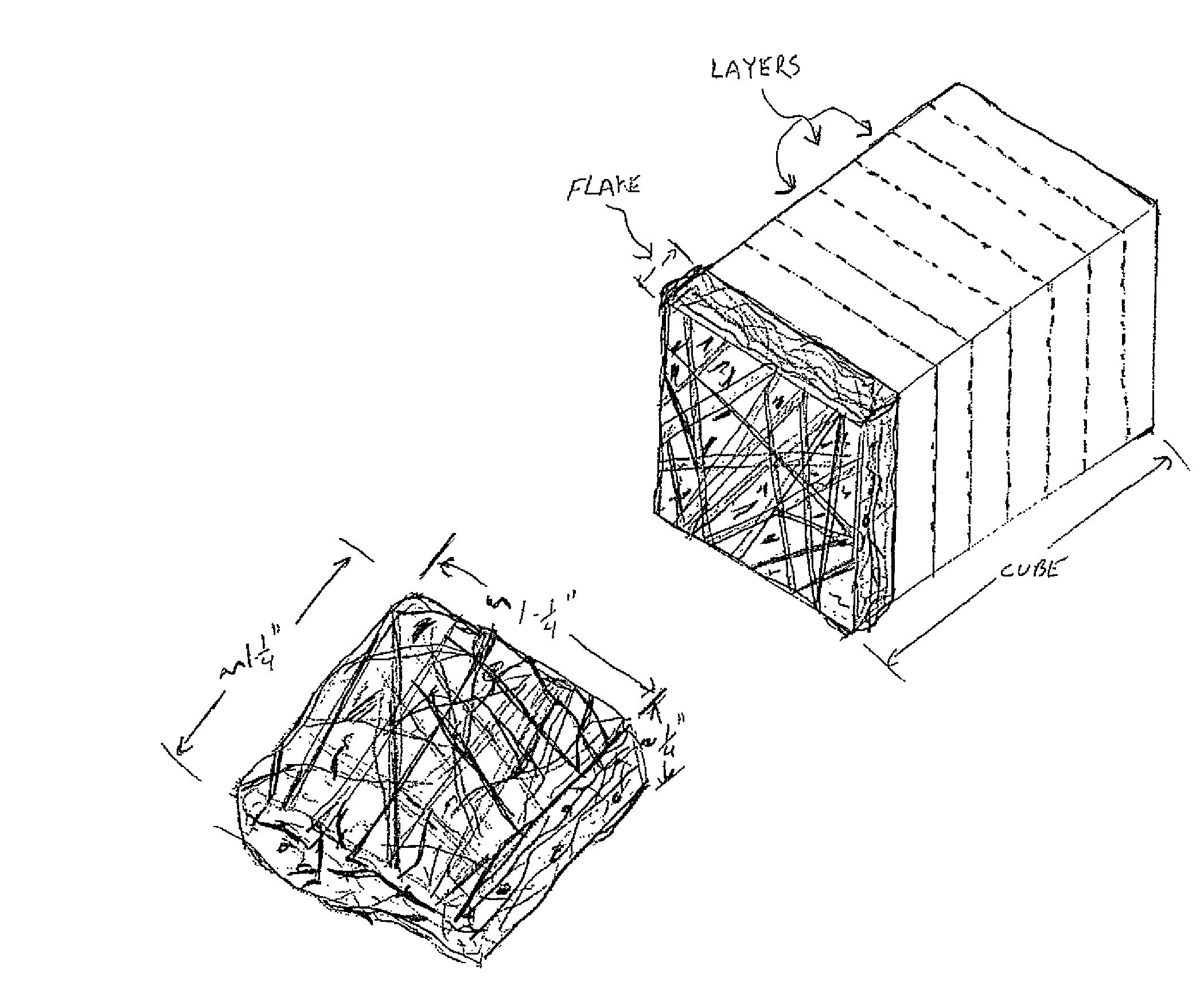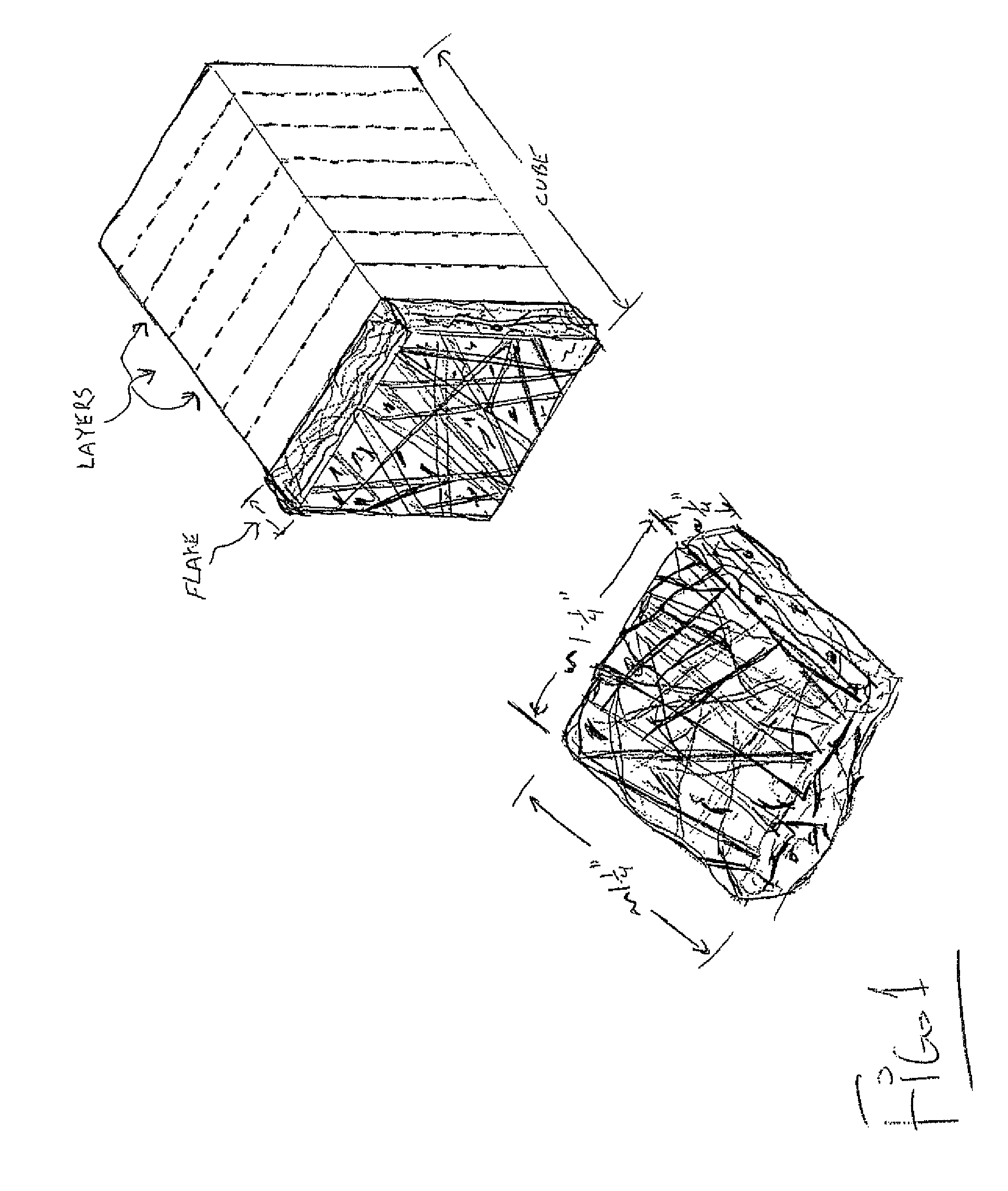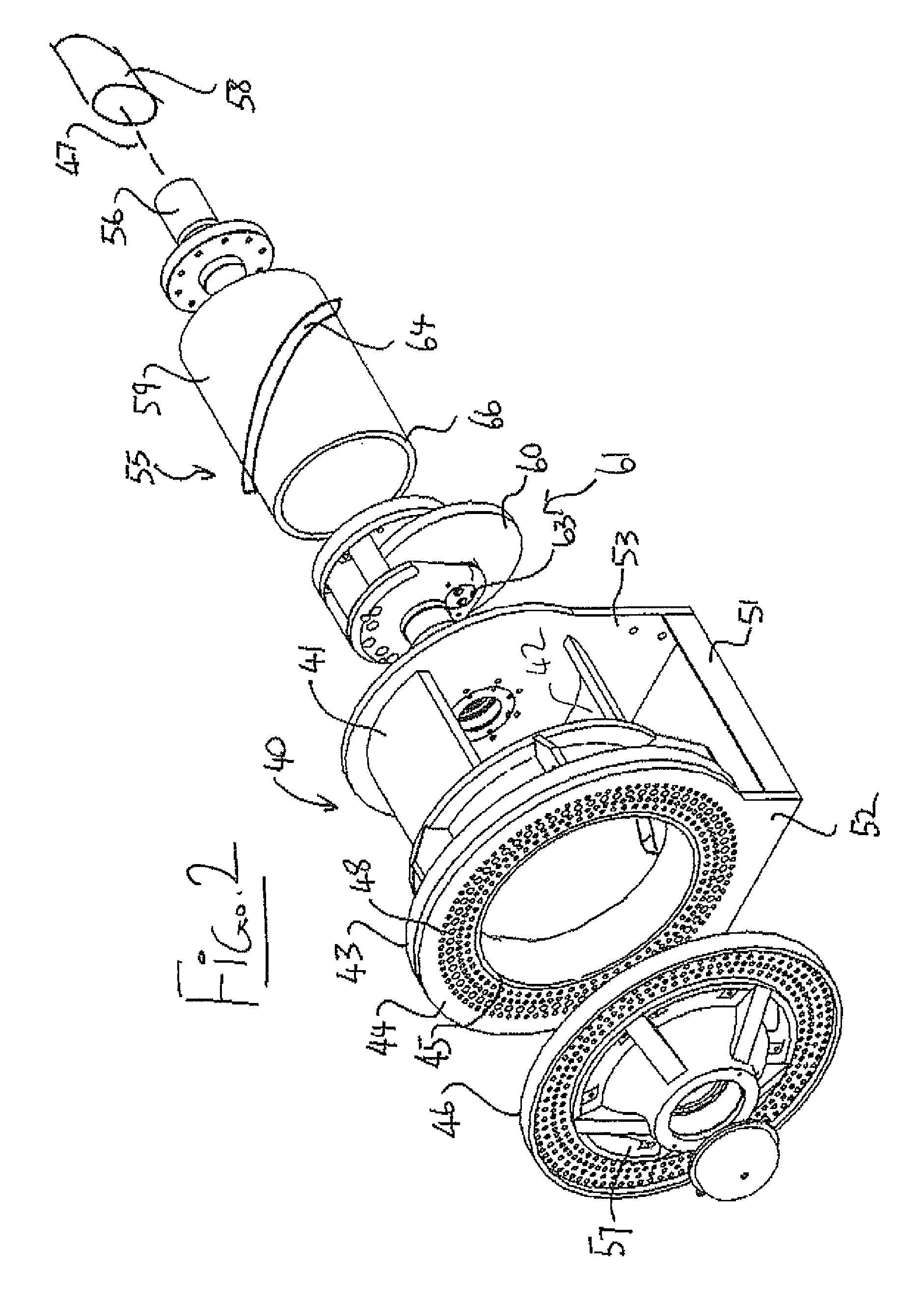Compressed straw material
a technology of compressed straw and straw, which is applied in the field of compressed straw material, can solve the problems of difficult to find bedding materials for animals, difficult to arrange, and difficult to find wood shavings and other wood by-products, and achieve the effects of less dust, less leaching effect, and easy spreading
- Summary
- Abstract
- Description
- Claims
- Application Information
AI Technical Summary
Benefits of technology
Problems solved by technology
Method used
Image
Examples
Embodiment Construction
[0080]The technique for compression of materials to form a compressed or densified product known as “cubing” is well established and widely used. The design of the Cuber has been available for 40 years and has changed little in that time. Such a Cuber is available from Cooper Cubing Systems of Burley, Id. USA. The Cuber of this type is robust and relatively inexpensive. Such Cubers have however been used for the compression of forage crops such as alfalfa. The alfalfa is introduced into the cubing system and the high compression up to 6,000 psi of the material as it enters the series of dies creates an effective product which is extruded through the dies. The Cuber is particularly designed and arranged to provide and effective cubing action of the alfalfa to maintain an attractive green appearance of the product so that it is attractive to the animals to be fed and to the handlers of those animals.
[0081]An example of a Cuber of this type is shown in a brochure of the above company a...
PUM
 Login to View More
Login to View More Abstract
Description
Claims
Application Information
 Login to View More
Login to View More - R&D
- Intellectual Property
- Life Sciences
- Materials
- Tech Scout
- Unparalleled Data Quality
- Higher Quality Content
- 60% Fewer Hallucinations
Browse by: Latest US Patents, China's latest patents, Technical Efficacy Thesaurus, Application Domain, Technology Topic, Popular Technical Reports.
© 2025 PatSnap. All rights reserved.Legal|Privacy policy|Modern Slavery Act Transparency Statement|Sitemap|About US| Contact US: help@patsnap.com



